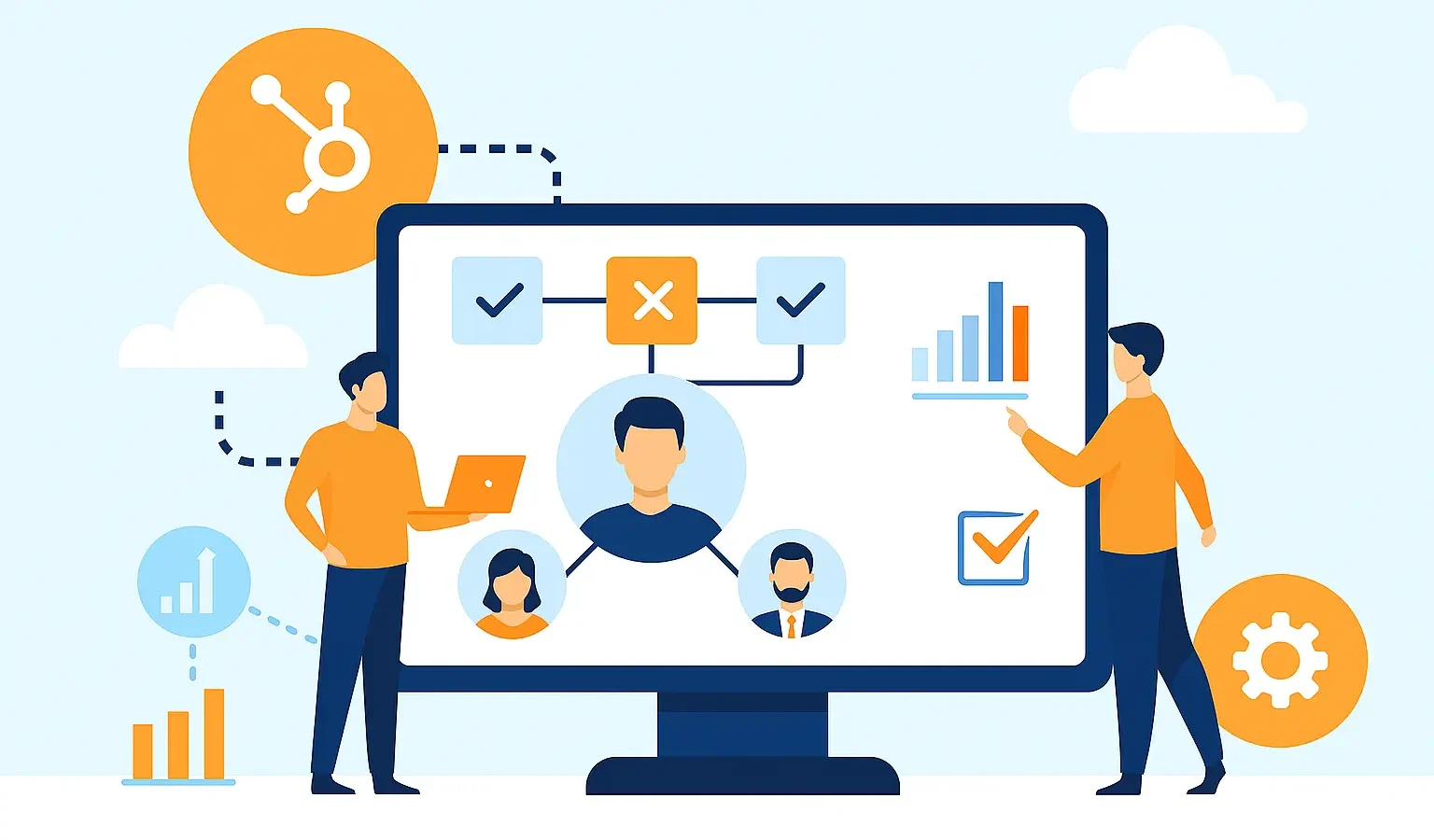Connect HubSpot to BI tools to break down data silos and turn scattered metrics into clear, actionable insights. By integrating HubSpot with platforms like Power BI or Tableau, you can unify marketing, sales, and operations data into one reliable view helping your team make faster, smarter decisions backed by real-time visibility and accurate reporting.
Key Takeaways
- Data silos make it harder to make decisions and keep teams on the same page.
- Linking HubSpot to BI tools creates a single point of truth.
- Integrations like HubSpot Power BI and Tableau make it easy to see and understand reports quickly.
- Custom HubSpot dashboards turn numbers into actions.
- Data governance makes ensuring that insights stay correct.
The Bigger Picture: Why Connecting HubSpot to BI Tools Matters Now
Every team has data. Few have clarity.Marketing tracks leads. Sales tracks pipeline. Operations tracks fulfillment. Different systems. Different views. Decisions made in the dark.
When you connect HubSpot to BI tools, the walls come down.Data flows easily. Leaders see one truth accurate, current, actionable.In a fast market, integration isn’t optional. It’s essential.
Before Integration: The Hidden Costs of Data Silos
Disconnected Systems, Disconnected Teams
Leads sit in HubSpot. Revenue sits in the ERP. Reports don’t match. Meetings turn into debates over whose numbers are right.
Slow, Fragmented Insights
By the time someone merges spreadsheets, the story has changed. Campaigns end. Deals close. Opportunities vanish.
Lost Confidence
Executives stop trusting dashboards. Teams work harder, not smarter. Strategy becomes guesswork.
After Integration: The Power of a Unified HubSpot-BI Ecosystem
One Source of Truth
HubSpot syncs with BI tools like Power BI and Tableau. Marketing, sales, and operations gain a single, unified view of performance.
Faster, Smarter Decisions
Leaders see revenue by campaign, cost per customer, and conversion speed, everything on one screen.
Aligned, Confident Teams
With shared metrics, silos fade. Everyone measures success the same way.
How to Connect HubSpot to BI Tools: A Step-by-Step Guide
Step 1: Define the Questions
What do you need to know? Examples: “Which channels drive the most revenue?” or “How long does it take to close a deal?”
Step 2: Audit Your Data
List every system that touches customer data. Identify duplicates and gaps.
Step 3: Choose Your Approach
- HubSpot Power BI integration: Use HubSpot’s native connector.
- Link HubSpot to Tableau: Build via API or middleware for more control.
- Custom HubSpot reporting dashboards: Design dashboards that match your KPIs.
Step 4: Map, Test, Train
Align data definitions. Test syncs. Train teams to read and use the dashboards.
Step 5: Govern and Grow
Assign owners. Review data quality monthly. Add new sources as your business scales.
Common Pitfalls When You Connect HubSpot to BI Tools
- Inconsistent field names between systems.
- Poor data hygiene – duplicates destroy trust.
- Overcomplicated dashboards no one reads.
- No process for ongoing maintenance.
- Ignoring user adoption and feedback.
What Marketers Should Do Right Now
- Identify the three biggest blind spots in your reporting.
- Map where that data lives.
- Pick one BI tool and start a small HubSpot integration.
- Build one executive-ready dashboard.
- Iterate monthly, improve accuracy and automation.
FAQs
How do I connect HubSpot to BI tools like Power BI?
You can use the native HubSpot Power BI connector or export the data to an intermediate data warehouse. The key is to map fields carefully and keep syncs automated and constantly monitored.
Can I link HubSpot to Tableau without code?
Yes. You can use specialized integration platforms like Integrate IQ or various low-code middleware options that utilize HubSpot’s API. We always recommend starting with a small pilot dashboard to confirm data alignment and quality.
What are the benefits of custom HubSpot reporting dashboards?
They deliver the exact metrics your business requires such as real-time campaign ROI, sales velocity, and accurate attribution without tedious manual data manipulation.
Why should I connect HubSpot to BI tools now?
Because waiting compounds confusion. Every new campaign, contact, or deal increases the cost of poor visibility. Integration stops the chaos before it grows.
Bottom Line
Connecting HubSpot to BI tools transforms scattered data into clear, actionable insight. It aligns marketing, sales, and operations around one truth, and one direction forward.
Ready to make the shift from disconnected dashboards to unified intelligence?
Partner with Integrate IQ to connect HubSpot to BI tools the right way fast, secure, and built for growth.


